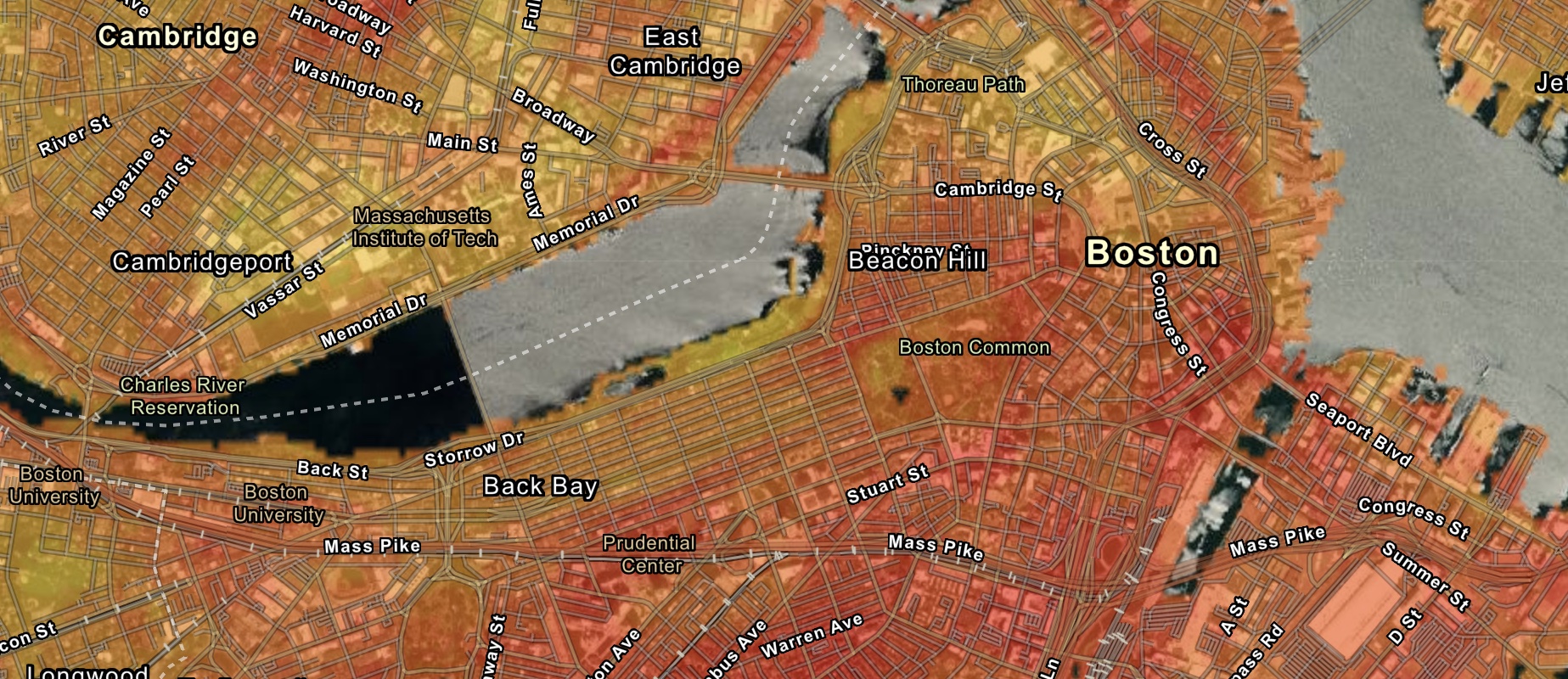When European colonization of the Americas began in the late fifteenth century, it set in motion an epochal series of changes that combined environmental transformation and social injustice on a massive scale. Colonial ecological practices, from farming to landownership to urbanization, were disastrous for the Native peoples who had lived here for millennia. In the centuries that followed, the environment became the site for brutal practices of exploitation, as Europeans forced Native groups from their homelands and upended their livelihoods through environmental changes that were purported to “improve” the natural world. Colonization decimated but did not extinguish Native presence in the Americas, however, and many tribes have made environmental campaigns a key part of their ongoing struggles for justice.
Cobb’s Latest Map of the Rosebud Reservation, South Dakota, to Be Opened for Settlement Aug. 8, 1904
A. H. Cobb; Burd & Fletcher Print. Co.
1904
Leventhal Map & Education Center

As white settlers moved west, their desire for productive land led to state-sanctioned violence in order to remove Native peoples. The Lakota people, who once occupied vast areas of the High Plains, were moved by the US military onto the Great Sioux Reservation in 1868, which was then subdivided in 1889 to create the Rosebud Reservation for the Brulé or Sičháŋǧu Oyáte Band, shown here. This 1904 map shows another step in that process, as reservation land was opened up for further sale to white settlers. Square sections with diagonal hatches were given to tribal members as “allotments,” while the hand drawn letters in other squares indicate land types for white speculators. More recently, this land became valuable to outsiders again as the potential route of the Keystone XL oil pipeline. In 2018, the Rosebud Tribe, together with neighboring tribes and supported by climate activists, sued to stop the permitting process for the pipeline. This campaign ultimately led the federal government to withdraw its support for the project, and in 2021, the pipeline plans were abandoned.
Indians of the U.S.A.
Louise E. Jefferson; Friendship Press, Inc.
1944
Leventhal Map & Education Center

The Native tribes of what is now the United States were and are just as diverse as the peoples of other continents. This map by Louise Jefferson, one of the few Black women cartographers of the twentieth century, shows the geography of tribal cultures across North America. It also documents some of the very forces that pushed them away—notice the ship landing in Massachusetts, the oil derricks in what is now Texas and Oklahoma, and a missionary heading west on a covered wagon (Jefferson’s publisher, Friendship Press, was run by the National Council of Churches, explaining this map’s many examples of religious conversion). The triangle symbol, including the one labeling the Pequot in Massachusetts, shows tribes relocated from their homelands. Today, indigenous land rights are an important part of environmental justice efforts, especially in cases where tribes are seeking to restore their ancestral rights to ecological resources like fishing or hunting grounds.
Indian Land Cessions in the United States
Charles C. Royce and Thomas Cyrus; Smithsonian Institution Bureau of American Ethnology
1899
Library of Congress

This map of Indian land cessions appeared in a book printed by the Smithsonian at the end of the nineteenth century. The term “cession” implies that Native peoples willingly ceded their land to settlers, which erases a history of violent removal. Here, the Rosebud reservation is marked 701, and the Standing Rock Reservation, site of one of the most important environmental justice battles of the past decade, is marked 702.

Tamara Stands and Looks Back-Spotted Tail
Land, Wind, and Power on the Rosebud Reservation
A legacy of military aggression, forced and unequal treaties, land dispossession and resource theft continues to shape the challenges facing the Lakota tribes of the Oceti Sakowin. Today, members of the Sičháŋǧu Oyáte (Brulé Sioux) on the Rosebud Reservation are looking toward wind energy as a way to achieve more independence and economic security while working in concert with the land. Tamara Stands and Looks Back-Spotted Tail and her husband, Chief John Spotted Tail, secured grants to install wind turbines in two communities in Rosebud to provide utility bill relief to vulnerable tribal members dealing with “diversities of disparities." They locate their work within a spiritual connection to the land and believe that it is through understanding the wrongs of history that one can change the outcome.
“Many people think that Indigenous people of the Americas have been eradicated but we are still here. We lived for thousands of years in our ancestral homelands and we have a name for every mountain, every river, every stream, every lake and every region. The only reason human beings survive upon mother earth is because of the water. She supports us, she gives us everything we need to survive and we must do the same—we should only take what we need and give back to her, for this is a form of respect. It is our connection to the land and our spiritual connection that make Indigenous people who we are. Most Native American tribes have our own creation stories and encoded in their DNA is our ancestral knowledge.
Many tribes in the United States have treaties with the United States government. When people came from across the oceans for a better life, we opened our lands, and yet today we are struggling with disparities of racism, discrimination and oppression. We live with low income, low housing, unemployment and poverty. We pray that someday, in order to protect the future, they will right the injustices of their forefathers.”










